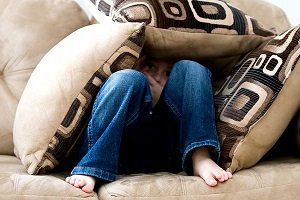How to Get Rid of Adolescent Bipolar Disorder
TweetBipolar disorder can occur in children and adolescents and has been investigated by federally funded teams in children as young as age 6.
How common is Bipolar Disorder in adolescents and children?
Although once thought rare, caseloads of patients examined for federally funded studies have shown that approximately 7% of children seen at psychiatric facilities fit bipolar disorder using research standards.
What are the symptoms of bipolar disorder in adolescents
In adolescents, bipolar disorder may resemble any of the following classical adult presentations of the illness.
Bipolar I - In this form of the disorder, the adolescent experiences alternating episodes of intense and sometimes psychotic mania and depression.
Symptoms of mania (manic bipolar disorder) in adolescent include:
- elevated, expansive or irritable mood
- decreased need for sleep
- racing speech and pressure to keep talking
- grandiose delusions
- excessive involvement in pleasurable but risky activities
- increased physical and mental activity
- poor judgment
- in severe cases, hallucinations
Symptoms of depression (depressive bipolar disorder) in adolescent include:
- pervasive sadness and crying spells
- sleeping too much or inability to sleep
- agitation and irritability
- withdrawal from activities formerly enjoyed
- drop in grades and inability to concentrate
- thoughts of death and suicide
- low energy
- significant change in appetite
Symptoms of Bipolar disorder II in adolescent - Here people mostly have depression and occasionally have an episode of Hypomania, but not mania. Most people with this have long episodes of depression and virtually no time of wellness.
Symptoms of Cyclothymia in adolescent - Adolescents with this form of the disorder experience periods of less severe, but definite, mood swings.
Symptoms of Bipolar Disorder NOS in adolescent - Doctors make this diagnosis when it is not clear which type of bipolar disorder is emerging.
For some adolescents, a loss or other traumatic event may trigger a first episode of depression or mania. Later episodes may occur independently of any obvious stresses, or may worsen with stress. Puberty is a time of risk. In girls, the onset of menses may trigger the illness, and symptoms often vary in severity with the monthly cycle.
Once the illness starts, episodes tend to recur and worsen without treatment. Studies show that after symptoms first appear, typically there is a 10-year lag until treatment begins. CABF encourages parents to take their adolescent for an evaluation if four or more of the above symptoms persist for more than two weeks. Early intervention and treatment can make all the difference in the world during this critical time of development.
Useful Information on adolescent bipolar disorder:
A majority of teens with untreated bipolar disorder abuse alcohol and drugs. Any child or adolescent who abuses substances should be evaluated for a mood disorder.
Adolescents who seemed normal until puberty and experience a comparatively sudden onset of symptoms are thought to be especially vulnerable to developing addiction to drugs or alcohol. Substances may be readily available among their peers and teens may use them to attempt to control their mood swings and insomnia. If addiction develops, it is essential to treat both the bipolar disorder and the substance abuse at the same time.
Bipolar Disorder - Bipolar Disorder is the form of depressive illness in which the sufferer has periods of being on a high, as well as periods of depression.
Treatment of adolescent Bipolar Disorder -Effective treatment is available for bipolar disorder.
What is the cause of Bipolar Disorder? Learn about various causes of bipolar disorder such as family tree, your genes, loss of job, etc.
What are the symptoms of Adolescent Bipolar Disorder? There are various symptoms of bipolar disorder.
Can Adolescent have bipolar disorder? Bipolar disorder can occur in adolescents and has been investigated by federally funded teams in children as young as age 6.
Can Children Have Bipolar Disorder? Children experience faster mood swings than adults, often cycling many times within a day.
Bipolar disorder - a case study Millions of Americans diagnosed with mental illness lead healthy lives because of information discovered through clinical studies.
History of adolescent bipolar disorder - Bipolar disorder has left its mark on history.
Importance of adolescent Bipolar disorder diagnosis Diagnosis is important, because it guides treatment decisions.
What is the need of diagnosis in childhood? The importance of proper diagnosis cannot be overstated.
What are the types of bipolar disorder? Learn about various types of bipolar disorder.
How can u help ur child or adolescent in bipolar depression and what is the role of parents? Your child can reduce the minor mood swings and stresses that sometimes lead to more severe episodes by adhering to the following tips.


Sometimes crying or laughing
are the only options left,
and laughing feels better right now.

Current Issue
 Self Help Leaflets Take the help of our self help leaflets or booklets. |
 The DG Magazine All about living with depression |


















